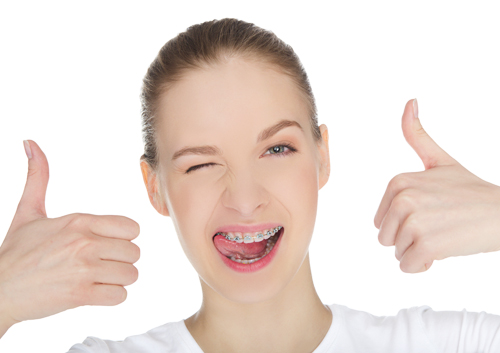June 16th, 2021

Braces can straighten your teeth to give you a more attractive smile for life. The process can take 18 months to two years or more, and this amount of time can seem unending when you first get your braces. Counting down your brace time can help the time pass more quickly and build the excitement for when you finally get your braces removed.
Make a Wall Calendar
Crossing out each day on a calendar is a standard way of counting down time. You can make this more personal by designing your own calendar to help you count down. Use an online customization service to upload photos or designs for each month. Each month’s picture can also display the number of months remaining until you expect your braces to come off.
Schedule Rewards
When you receive regular rewards for continuing to wear your braces, they can seem less burdensome. Plan to buy yourself a reward every month that you wear your braces for the duration of the treatment. The time will pass much faster when you feel you are earning rewards for your patience.
Lengthen a Paper Chain
Use strips of paper to make the links of your chain, and add a new link each week to lengthen the chain. Before sealing each new strip of paper into a circle, write on it a reason why you are getting your teeth straightened, or an event in the future when you will appreciate your straight teeth as you smile.
Use a Wall Hanging
Purchase a large pad of blank white paper. Write a “0” on the bottom sheet and a “1” on the next, and continue until you reach the number of days remaining in your treatment. Rip off the top sheet each day to see how many days are left and remind yourself of the progress you are making.
Find a Buddy
If any of your friends get braces around the same time as you, share the experience. Make a pact to celebrate each trip to our office when one of you receives news about your progress.
June 9th, 2021

When you get your braces, Dr. Daniel Ma and our staff will also give you a list of foods you should not eat and things you should not do. Pay particular attention to these items to keep your teeth and braces safe.
Charms belong on bracelets. While you can decorate your braces with colored bands, hanging a charm off them is a bad idea. If you bite down on the charm, you could damage your braces or your teeth. You could also swallow your jewelry.
Never use your teeth as a bottle opener. This is just as important when you are wearing braces. While braces straighten your teeth, your teeth are moving in the process. That makes them weaker, and the metal in the braces does not make them invincible. Invest in a bottle opener; you can buy one for a few dollars, which is much less expensive than having to replace your braces.
Contrary to what you might think, your braces are not designed to work as a radio. There are tales of people who have picked up radio signals from dental fillings or braces. While this is remotely possible, attaching an antenna to your mouth is just not a good idea. You will get better quality music from a radio.
On the other hand, you can still kiss someone while wearing braces. In fact, even if both of you wear braces, the chances of your getting locked together are almost negligible. However, to avoid cutting your partner’s lips, kiss with caution.
If you have any questions about taking care of your braces, please ask Dr. Daniel Ma and our staff. We want you to get the best results from your treatment without needless delays.
June 2nd, 2021

People have known for a long time that including dairy in their diets can help maintain healthy bones and even help promote weight loss. But what you may not know is that the routine intake of dairy products may also help promote periodontal health. Since June is National Dairy Month, Dr. Daniel Ma and our team at our office want you to know that patients who consume at least 55 grams of dairy products, such as milk, cheese, and yogurt, may significantly reduce instances of gum disease.
Have questions about which foods to choose when trying to improve your oral health? Contact our Vancouver, BC office and ask our team!
May 26th, 2021

While it’s normal to feel self-conscious, there is no reason to avoid photos just because you wear braces. Many people wear braces and you do not need to be embarrassed about them. There are also ways you can enjoy your photos without hiding your smile.
Make it Fun
Dr. Daniel Ma and our staff offer rubber bands for braces in a wide range of colors. Choose your favorite color and wear it with pride. You can mix and match your colors too. For Valentine’s Day, try alternating red and pink bands. For the Fourth of July, use red, white, and blue!
Bands are also available in neon colors and glow-in-the-dark designs. Your imagination is the only thing holding you back. You might want to avoid using dark green bands, though. It makes it look as though you have broccoli stuck in your teeth. Gross!
Make them Disappear
If your braces still really bother you in photos, technology can quickly solve the problem. A photo-editing program, or even a simple paint program, can easily erase your braces. Zoom in on your teeth, pick your natural tooth color with the dropper, and paint your braces away.
If you have a significant amount of metal in your braces, try to avoid close-ups with flash. The flash can reflect off the metal. The important thing to remember is how good your teeth will look and feel once your orthodontic work is complete. Dr. Daniel Ma and our staff can also show you options for braces that are not as visible as the traditional style.





 Website Powered by Sesame 24-7™
Website Powered by Sesame 24-7™